Content Menu
● Introduction to Swimwear Materials
>> What is Swimwear Made Of?
>> Why Material Choice Matters
● Common Materials Used in Swimwear
>> Nylon
>> Polyester
>> Spandex (Lycra)
>> Neoprene
>> PBT (Polybutylene Terephthalate)
>> Recycled Materials
>> Factors to Consider When Choosing Swimwear Material
● Understanding Sustainable Swimwear
>> What is Sustainable Swimwear?
>> Why Choose Sustainable Options?
● Exploring Eco-Friendly Fabrics
>> Recycled Materials
>> Biodegradable Fabrics
● Swimwear Innovations
>> Smart Fabrics
>> Performance Enhancements
● Choosing the Right Swimwear for You
>> Consider Your Activities
>> Comfort and Fit
● Summary and Conclusion
● FAQs
>> What is the most sustainable swimwear material?
>> How can I tell if swimwear is eco-friendly?
Swimwear is an essential part of summer wardrobes, beach vacations, and pool parties. But have you ever wondered what material is swimwear made of? Understanding the materials used in swimwear can help you make informed choices when purchasing swimsuits, whether for fashion, functionality, or sustainability. This article will explore the various materials used in swimwear, their properties, and why they are chosen for this specific type of clothing.
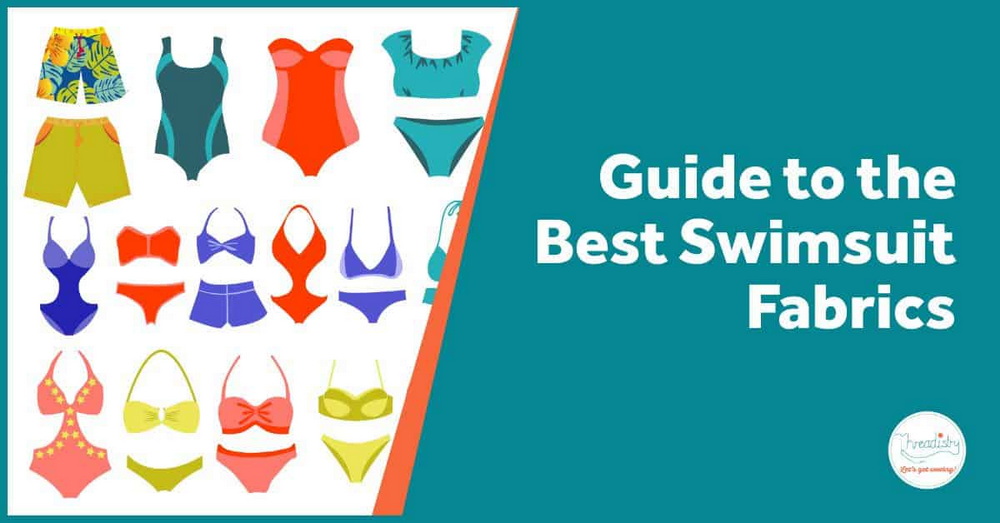
Introduction to Swimwear Materials
When you think of swimwear, you might picture colorful bikinis, snug one-pieces, or stylish swim trunks. But have you ever wondered what these fun outfits are made of? Understanding swimwear materials is important because the right fabric can make a big difference in how comfortable and durable your swimwear is.
What is Swimwear Made Of?
Most swimwear is made from special clothing materials like nylon, polyester, and spandex. These materials are chosen because they are stretchy and quick-drying. Nylon is strong and lightweight, while polyester is great for keeping colors bright and doesn't fade easily. Spandex gives swimwear its stretchy quality, allowing you to move freely in the water. These fabrics work together to create swimwear that feels good and lasts a long time.
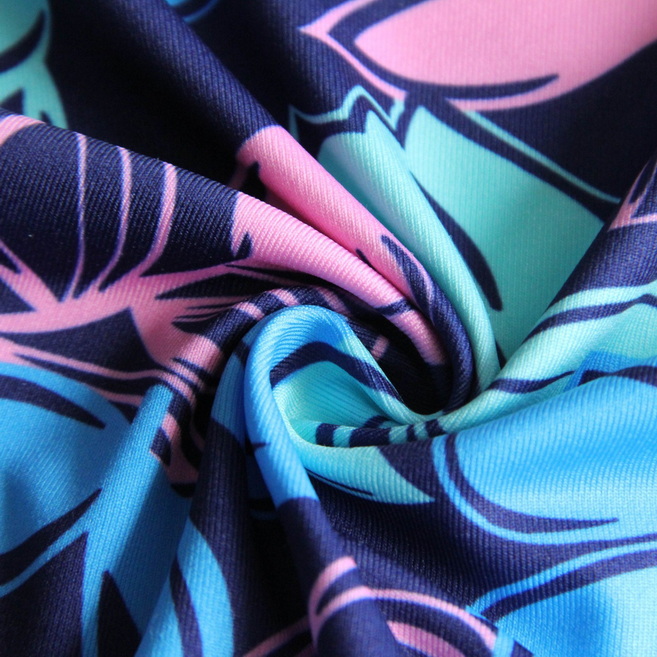
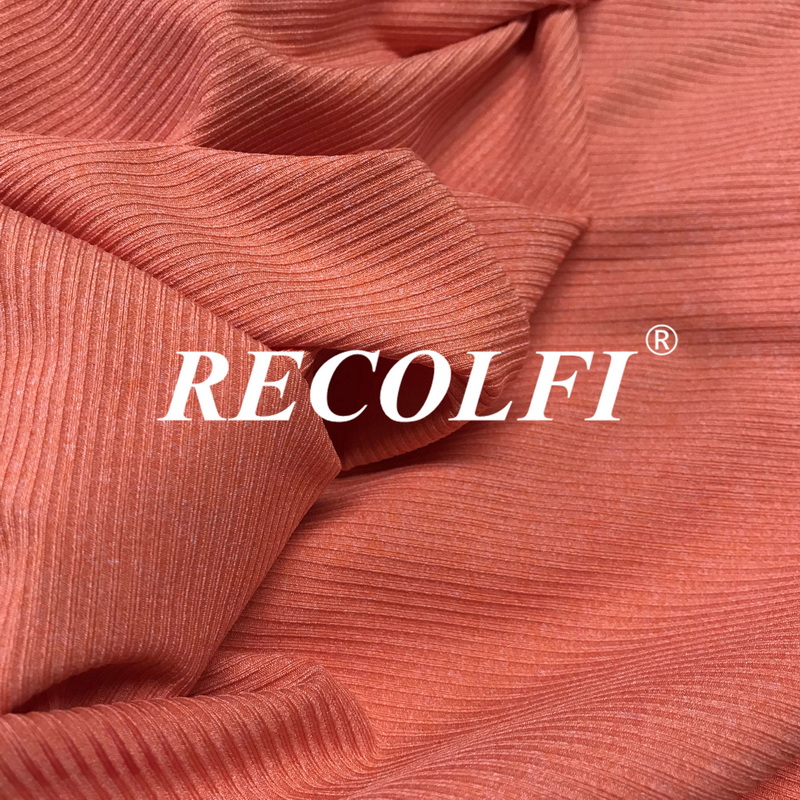
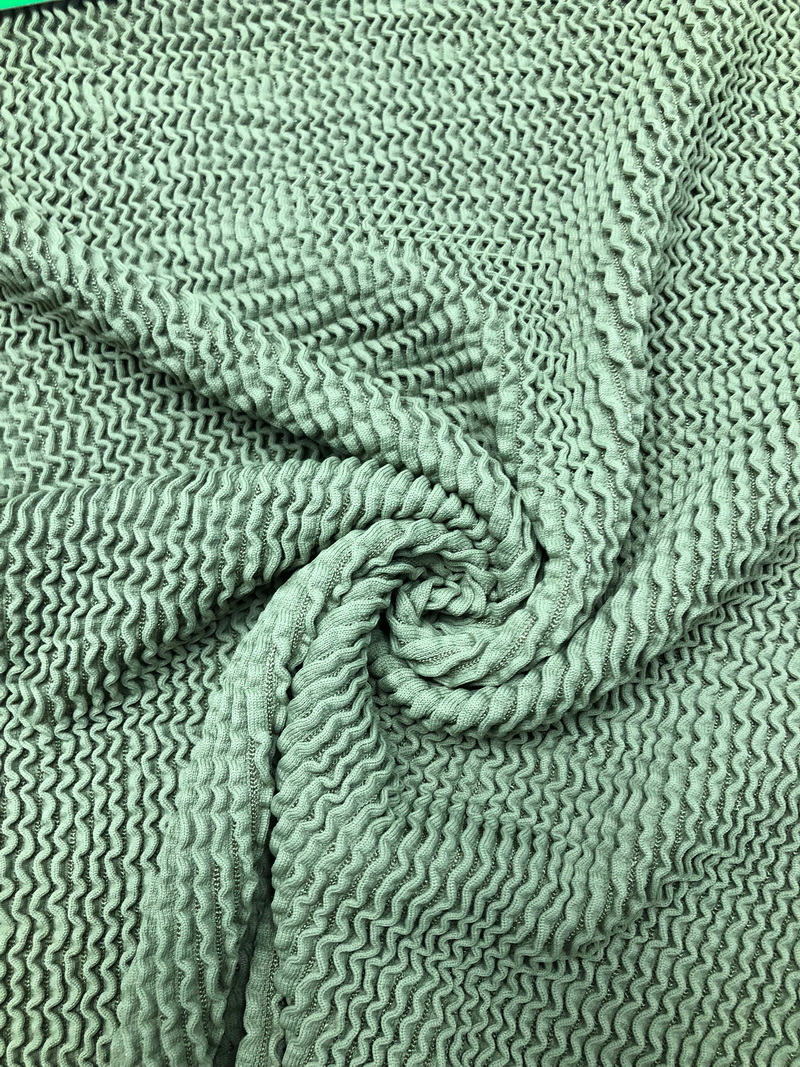

Why Material Choice Matters
The choice of material in swimwear really matters! It can affect how comfortable you feel while swimming. For example, a swimsuit made with soft materials will feel nice against your skin, while a rough fabric might make you uncomfortable. Durability is also key. Swimwear that uses strong materials won't easily rip or wear out, even with lots of splashing and diving. Plus, the right fabric can help you swim better by reducing drag in the water. So, when picking your next swimsuit, remember that the material is just as important as the style!
Common Materials Used in Swimwear
Nylon
◆ Properties: Nylon is a synthetic fabric known for its strength, elasticity, and resistance to mildew. It is lightweight and dries quickly, making it a popular choice for swimwear.
◆ Usage: Many swimsuits are made from nylon blends, often combined with spandex for added stretch. This combination allows for a snug fit that moves with the body, providing comfort and support while swimming.
Polyester
◆ Properties: Polyester is another synthetic fabric that is durable, resistant to shrinking and stretching, and quick-drying. It is also known for its colorfastness, meaning it retains its color even after prolonged exposure to chlorine and sunlight.
◆ Usage: Polyester swimsuits are often favored for competitive swimming due to their durability and ability to withstand harsh pool chemicals. They are also available in various styles and designs, making them a versatile option for casual swimwear.
Spandex (Lycra)
◆ Properties: Spandex, also known as Lycra or elastane, is a highly elastic synthetic fiber that can stretch up to five times its original length. It is often blended with other fabrics to enhance their stretchability and comfort.
◆ Usage: Most swimwear incorporates spandex to provide a snug fit and allow for freedom of movement. This material is essential for competitive swimsuits, as it helps reduce drag in the water.
Neoprene
◆ Properties: Neoprene is a type of synthetic rubber that is thick, insulating, and water-resistant. It is commonly used in wetsuits and other water sports gear.
◆ Usage: While not as common in traditional swimwear, neoprene is increasingly used in fashion swimwear for its unique look and ability to provide warmth in cooler waters.
PBT (Polybutylene Terephthalate)
◆ Properties: PBT is a type of polyester that is known for its superior stretch and recovery properties. It is also resistant to chlorine, making it ideal for swimwear.
◆ Usage: PBT is often used in competitive swimwear, providing a comfortable fit that maintains its shape over time.
Recycled Materials
◆ Properties: With growing environmental concerns, many brands are now using recycled materials, such as recycled nylon or polyester, to create swimwear. These materials are often made from discarded fishing nets or plastic bottles.
◆ Usage: Eco-friendly swimwear is becoming increasingly popular, appealing to environmentally conscious consumers who want to reduce their carbon footprint.
Factors to Consider When Choosing Swimwear Material
When selecting swimwear, consider the following factors:
◆ Purpose: Are you swimming competitively, lounging by the pool, or participating in water sports? Different activities may require different materials.
◆ Fit and Comfort: Look for materials that provide a comfortable fit and allow for movement. Stretchy fabrics like spandex are ideal for active use.
◆ Durability: If you swim frequently, opt for materials that are resistant to chlorine and UV rays, such as polyester or PBT.
◆ Sustainability: If environmental impact is a concern, consider swimwear made from recycled materials.
Understanding Sustainable Swimwear
Sustainable swimwear is a special kind of swimwear made with the environment in mind. It helps reduce pollution and save our planet. When we talk about sustainable swimwear, we're really focusing on two important things: the materials used and how they are made. Choosing eco-friendly swimwear is a great way to enjoy the beach or pool while also caring for nature.
What is Sustainable Swimwear?
Sustainable swimwear is made from materials that are good for the Earth. This means using eco-friendly fabrics that are produced without harming the environment. These fabrics can come from plants or recycled items, like plastic bottles. The best part about sustainable swimwear is that it helps keep our oceans and waterways clean. When we wear swimwear made from these materials, we are supporting green fashion, which is all about making choices that are better for the environment.
Why Choose Sustainable Options?
When we choose sustainable swimwear, we make a positive impact on our planet. It helps reduce waste and lowers the amount of pollution. Every time we buy eco-friendly swimwear, we are telling companies that we care about the Earth. Plus, sustainable options often last longer and feel just as good as regular swimwear. So, by picking these choices, we can enjoy swimming and help protect nature at the same time!
Exploring Eco-Friendly Fabrics
When we think about swimwear, we often focus on style and comfort. But it's also important to think about what the swimwear is made from. Eco-friendly fabrics are special materials that are good for the planet. Let's dive into this world of sustainable fabrics!
Recycled Materials
One of the coolest types of eco-friendly fabrics is made from recycled materials. This means that instead of making new things, we take old stuff and turn it into something new! For swimwear, we often use recycled polyester and recycled nylon. These materials come from things like plastic bottles or old clothes. The process starts by cleaning and shredding the plastic or fabric. Then, it's melted down and turned into new threads that can be used to make swimsuits. This not only helps reduce waste but also saves energy compared to making new materials.
Biodegradable Fabrics
Another amazing option is biodegradable fabrics. These are materials that can break down naturally after their life is over. Two popular biodegradable fabrics are organic cotton and hemp. Organic cotton is grown without harmful chemicals, which is safer for the environment. Hemp is a super strong plant that grows quickly and needs little water. When swimwear made from these fabrics is no longer needed, it won't just sit in a landfill forever. Instead, it will decompose and return to the earth, helping keep our planet clean and healthy.
Swimwear Innovations
Swimwear innovation is changing the way we think about swimsuits. Designers and companies are coming up with new ideas that make swimwear better for everyone. This includes advanced swimwear technology and materials that help swimmers perform their best and stay comfortable in the water.
Smart Fabrics
One exciting area of swimwear innovation is smart fabrics. These special materials can do amazing things! For example, some smart fabrics offer UV protection, which helps shield your skin from the sun's harmful rays when you are swimming outdoors. Others are designed to dry super quickly, so you won't be stuck in wet clothes for long. Some even have features that help keep you cool while you swim. Isn't that cool?
Performance Enhancements
Another important part of swimwear innovation is performance enhancements. This means making swimsuits that help athletes swim faster and more efficiently. For example, some new swimsuits have streamlined designs that reduce drag in the water. This helps swimmers glide through the water with less resistance. Also, there are compression materials that fit snugly against the body. These materials can support the muscles and improve blood flow, helping swimmers feel strong and perform their best.
Choosing the Right Swimwear for You
When it comes to choosing swimwear, there are a few important things to think about. You want to find the best swimwear that matches your style, activities, and comfort needs. It can be fun to look at different options and decide what feels right for you!
Consider Your Activities
First, think about what you'll be doing in your swimwear. Are you going to the pool to swim laps, or are you spending the day at the beach? If you swim a lot, you might want swimwear that is tight-fitting and made for performance. On the other hand, if you're just splashing around with friends, a fun, colorful swimsuit might be perfect. Choosing swimwear that fits your activities will help you enjoy your time in the water.
Comfort and Fit
Next, comfort is super important when choosing swimwear. You want to find a swimsuit that fits well and doesn't pinch or slide around. Try on different sizes and styles to see what feels best on you. If you feel good in your swimwear, you will have a lot more fun swimming and playing! Remember, the right fit can make all the difference.
Summary and Conclusion
In this blog post, we explored the fascinating world of swimwear materials and how they impact our choices. We learned that swimwear is made from various fabrics like nylon, polyester, and spandex, which are important for comfort and performance in the water. Choosing the right swimwear materials can make a big difference whether you're swimming laps or having fun at the beach.
We also discussed the growing trend of sustainable swimwear. Sustainable swimwear uses eco-friendly fabrics, which are better for our planet. By choosing green fashion, we can help reduce waste and protect our environment. It's not just about looking good; it's about making choices that are good for the Earth too.
When we looked into eco-friendly fabrics, we found out that materials like recycled polyester and biodegradable fabrics, such as organic cotton and hemp, are great options. These fabrics help reduce pollution and use fewer resources, making them a smarter choice for swimwear.
We also learned about exciting swimwear innovations that are changing the way we think about swimwear. Smart fabrics can offer UV protection and dry quickly, while performance enhancements can help swimmers move better and swim faster. These advancements show how advanced swimwear is evolving to meet the needs of swimmers everywhere.
Finally, we talked about how to find the best swimwear for you. It's important to consider your activities and to choose swimwear that fits well and feels comfortable. By making informed choices about your swimwear, you can enjoy your time in the water even more.
Understanding the different aspects of swimwear helps us appreciate our choices, whether we opt for stylish designs or prioritize sustainability. Remember, your swimwear can reflect both your personality and your values!
FAQs
What is the most sustainable swimwear material?
The most sustainable swimwear materials are often made from recycled materials. For example, recycled polyester and nylon come from old plastic bottles or fishing nets. Using these materials helps reduce waste and is better for our planet. Another great option is biodegradable fabrics, like organic cotton and hemp, which break down naturally and don't harm the environment.
How can I tell if swimwear is eco-friendly?
To find out if swimwear is eco-friendly, check the label for terms like "sustainable swimwear" or "made from recycled materials." You can also look for brands that focus on green fashion and have good practices for the environment. Sometimes, they will use eco-friendly fabrics, so look for swimwear made from those special materials. If a company shares its sustainability efforts, that is a good sign they care about our planet!
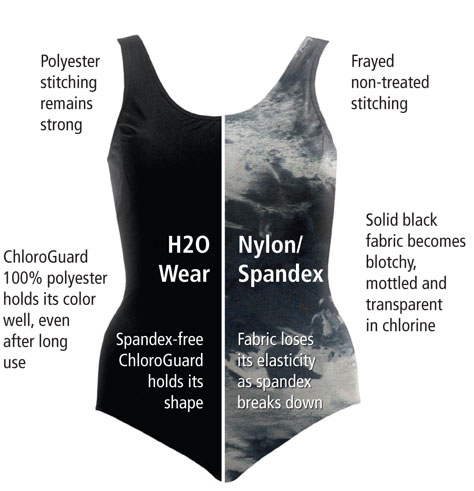
A comparison of swimwear materials displaying features and durability differences.
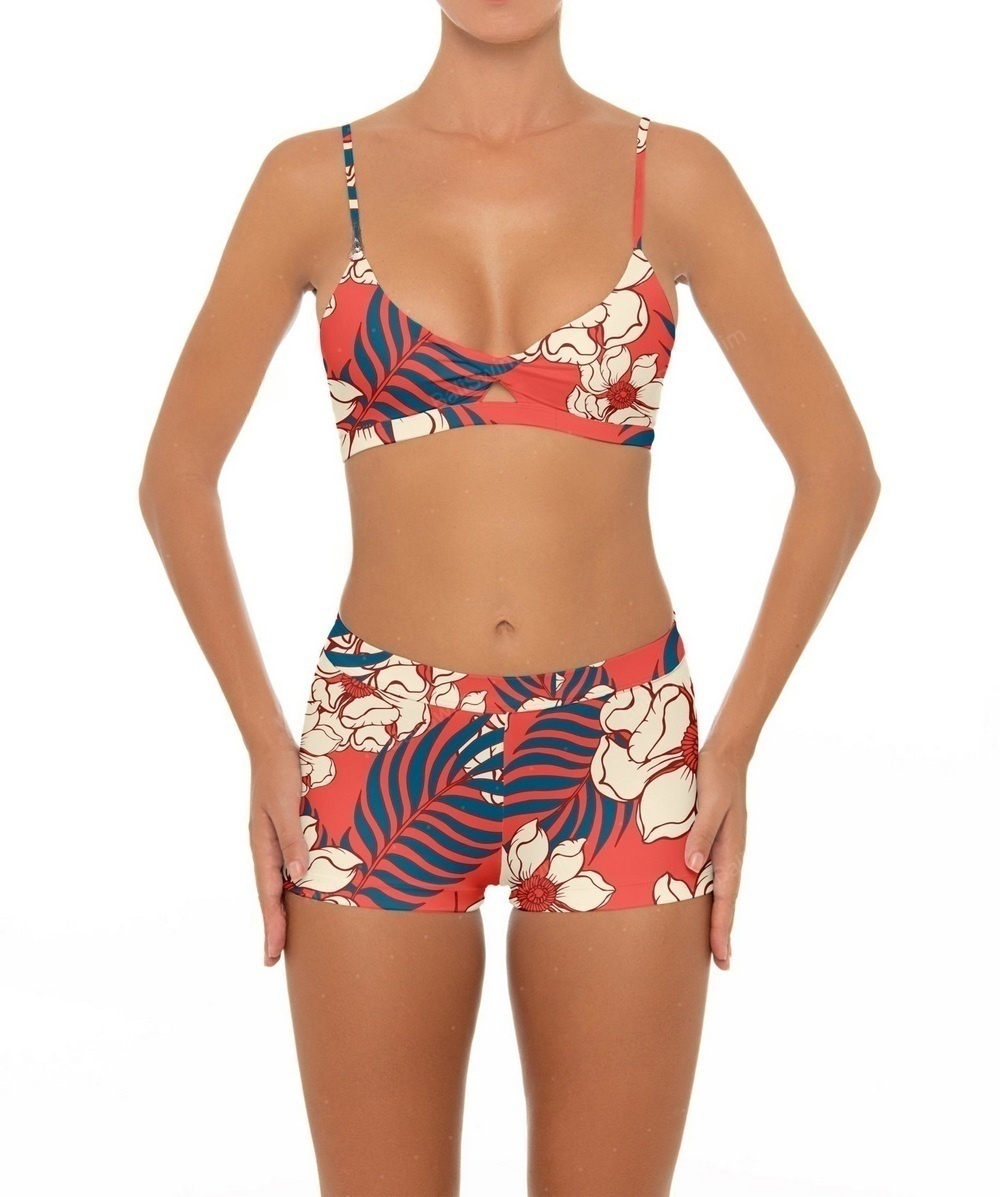
A model wearing a vibrant red swimwear set adorned with tropical floral patterns.
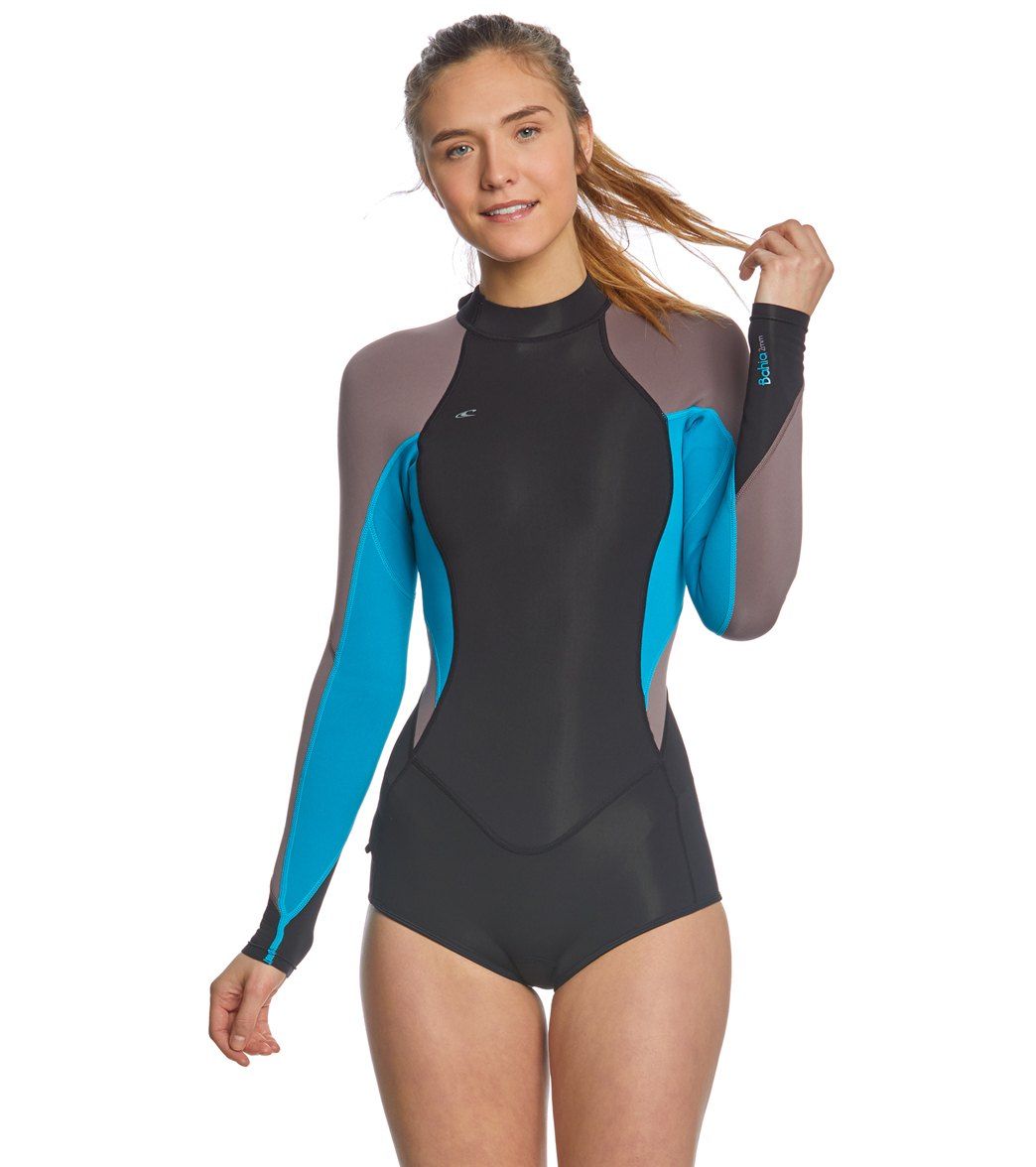
A young woman in a colorful swimwear piece, showcasing the fabric's design.
By understanding the materials that make up swimwear, you can make better choices that suit your style, comfort, and environmental values.









































